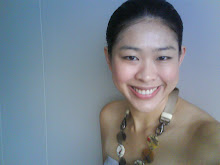I am starting to seriously subscribe to the thinking that if a couple have the same passion and goals, they could make most things a success. One of these couples that have that proven formula is Ooma Bannon and Russel Pinch. They have made Pinch Design one of the leading design houses in UK.
Born in 1973, Russell Pinch graduated from Ravensbourne College of Design, London. After graduating he worked as Sir Terence Conran’s design assistant and in 1995 he became a Senior Product Designer for the Conran Group. Here he was responsible for developing a diverse range of products for the Conran shops and restaurants and many of the designs for the Conran Collection, Conran’s benchmark homeware collection.
After 5 years with Conran, Russell co-founded The Nest, a multi-disciplinary brand design agency with clients including British Airways, MFI, WHSmith, Rip Curl and Selfridges.
In 2004 a return to furniture design beckoned and PINCH, a furniture, product and interior design company, was born. The first collection of furniture was launched at 100% Design, London to great acclaim. Pinch was awarded the Blueprint/100% Design Best Newcomer award and the Design & Decoration Furniture Award 2005.
Oona joined PINCH full time in January 2006 to run the business and manage projects. Having spent 6 years in the design industry, first account managing at The Nest followed by 4 years as Account Director at branding agency Bloom, she brings a wealth of consumer understanding as well as passion for developing and delivering projects. She works closely with Russell to develop briefs, hone the concepts, design the colours and select the fabrics. She also reviews boutique and luxury hotels for Mr & Mrs Smith.
Born in 1973, Russell Pinch graduated from Ravensbourne College of Design, London. After graduating he worked as Sir Terence Conran’s design assistant and in 1995 he became a Senior Product Designer for the Conran Group. Here he was responsible for developing a diverse range of products for the Conran shops and restaurants and many of the designs for the Conran Collection, Conran’s benchmark homeware collection.
After 5 years with Conran, Russell co-founded The Nest, a multi-disciplinary brand design agency with clients including British Airways, MFI, WHSmith, Rip Curl and Selfridges.
In 2004 a return to furniture design beckoned and PINCH, a furniture, product and interior design company, was born. The first collection of furniture was launched at 100% Design, London to great acclaim. Pinch was awarded the Blueprint/100% Design Best Newcomer award and the Design & Decoration Furniture Award 2005.
Oona joined PINCH full time in January 2006 to run the business and manage projects. Having spent 6 years in the design industry, first account managing at The Nest followed by 4 years as Account Director at branding agency Bloom, she brings a wealth of consumer understanding as well as passion for developing and delivering projects. She works closely with Russell to develop briefs, hone the concepts, design the colours and select the fabrics. She also reviews boutique and luxury hotels for Mr & Mrs Smith.
 Ooma Bannon and Russel Pinch.
Ooma Bannon and Russel Pinch.

































































